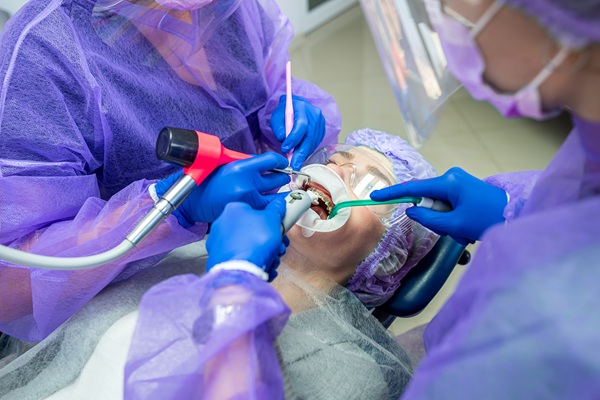Maxillofacial Surgery for Jaw Alignment: Improving Function and Aesthetics

Maxillofacial surgery is a specialized field focused on correcting issues related to the jaw, face, and mouth. It is often recommended for individuals who experience difficulties with jaw alignment. These issues can impact both function and appearance. A maxillofacial surgeon can significantly improve a person's ability to speak, chew, and breathe while also improving the appearance of their face.
An overview of jaw misalignment
Jaw misalignment, also known as malocclusion, refers to improper alignment of a person's upper and lower jaws. Common conditions include:
- Overbites
- Underbites
- Crossbites
- Open bites
- Overcrowding
These misalignments may result from genetic factors, facial or jaw injuries, or developmental issues. Malocclusions can create difficulties in daily activities such as chewing food and speaking, leading to chronic discomfort or pain over time. Severe misalignment may also contribute to sleep apnea and other breathing issues.
Understanding maxillofacial surgery
Maxillofacial surgery, or orthognathic surgery, is a surgical procedure that addresses malocclusions. An oral surgeon uses this procedure to reposition the jaws to correct misalignment, improve the patient's bite, and enhance facial symmetry. While orthodontic treatments such as braces can help realign a person's teeth, maxillofacial surgery may be necessary in cases of severe jaw misalignment.
Before maxillofacial surgery, the oral surgeon will evaluate the specific structural issues of each patient to decide if surgical intervention is necessary. During a comprehensive consultation, the oral surgeon examines the patient's bite, jaw position, and facial structure using X-rays, CT scans, and other imaging techniques. Based on the findings, the oral surgeon creates a customized surgical plan, which may involve repositioning the upper jaw, lower jaw, or both. They will also determine which procedure will yield the best results for the patient's oral health and overall well-being.
During the procedure, the oral surgeon carefully adjusts the position of the patient's jawbone. They may use screws, plates, or wires to stabilize the bones in their new position. Depending on the procedure, recovery times and post-operative care may vary. However, most patients typically notice significant improvements in their comfort and function within a few months of surgery.
Benefits of maxillofacial surgery for jaw misalignment
The primary goal of maxillofacial surgery for jaw alignment is to improve the function and appearance of a person's smile. Correcting jaw alignment can resolve several issues, including:
- Improved bite function: With a properly aligned jaw, patients can chew food more effectively, reducing strain on the jaw muscles and preventing uneven wear on teeth.
- Improved speech: Jaw misalignment can cause speech issues like lisping or slurring, but these can often improve after surgery. Proper jaw alignment enables more natural tongue and jaw movement, resulting in clearer articulation.
- Better breathing: Maxillofacial surgery can relieve airway restrictions caused by misalignment. Patients with obstructive sleep apnea often find relief after jaw alignment surgery, as it improves airflow and reduces sleep disturbances.
- Cosmetic improvements: Jaw misalignment can affect facial symmetry, making some individuals self-conscious. Maxillofacial surgery can enhance appearance and boost confidence by creating a more balanced and symmetrical look.
Call our office to schedule an appointment
Maxillofacial surgery offers a transformative solution for people struggling with jaw alignment issues. It provides lasting functional and cosmetic improvements. Ready to learn more? Call our Norwalk office to schedule an appointment.
Request an appointment here: https://www.premieroralsurgeryct.com or call Premier Oral Surgery at (203) 945-0049 for an appointment in our Norwalk office.
Check out what others are saying about our services on Yelp: Maxillofacial Surgery in Norwalk, CT.
Related Posts
A root canal and apicoectomy are the two endodontic procedures that can save a tooth. Between the two surgeries, the root canal is the more common one. One will only get an apicoectomy if a root canal fails. If you want to know the difference between a root canal and an apicoectomy, here are the…
An oral surgeon rarely provides first-line dental care. That is the job of a general dentist, whose role is to provide holistic care that covers all aspects of oral health. So it is not every day that a patient makes an appointment with an oral surgeon.The role of an oral surgeon is to increase the…
You need an oral surgeon for complex dental procedures. This dental care provider can perform non-invasive and invasive dental treatments. Understanding what happens during the first visit can ease your anxiety. Here are the things you should look forward to when you consult your oral surgeon.The oral surgeon will receive a referral from the patient’s…
A common misconception that patients have about their oral surgeon is that they only treat issues dealing with oral health, and they are not concerned with improving a patient’s cosmetic appearance. However, oral surgeons also offer various cosmetic treatment options that help patients gain a more attractive smile. There are many cosmetic issues that require oral…
